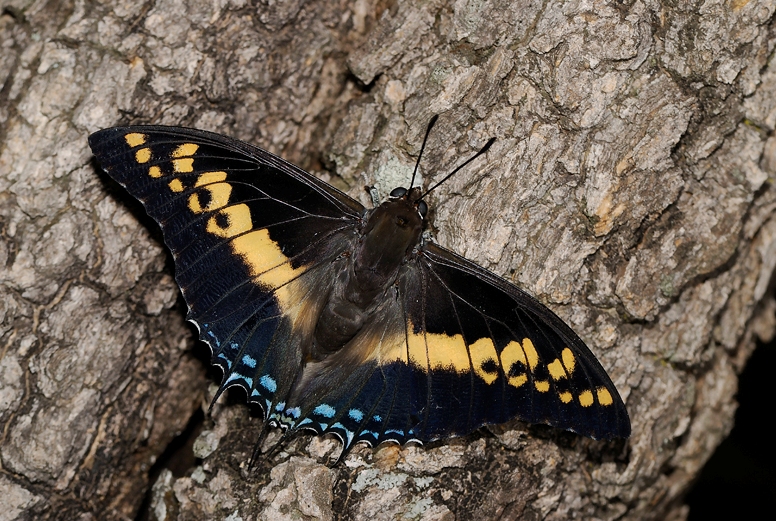
CHARAXES CASTOR (Charaxes castor)
Phylum — arthropoda
Class — insecta
Order — lepidoptera
Family — nymphalidae
Genus – charaxes
Appearance
The older caterpillars are green, covered with short pimples.
The wingspan is 75–85 mm in males and 85–105 mm in females. The forewings and hindwings are black with a broad yellow stripe. There are a number of blue spots on the hindwings. Underside of the wings has got a wide white stripe and a pattern of brown, black, yellow and white colors. The hindwings have two small tails.
Habitat
Charaxes castor is found throughout the Afrotropical realm below the Sahel.
Behavior
Charaxes castor demonstrates daily activity. The flight period is year-round but more common in late summer to autumn.
Diet
Larvae feed on Bridelia micrantha, Afzelia quanzensis, Tragia spp., Gymnosporia spp., Maytenus senegalensis, Schotia brachypetala, Bridelia micrantha and Cassia fistula.
The butterflies feed on sap flowing from wounds on trees and rotting fruit. They like to feed on fresh manure and rotten meat.
Reproduction
For their reproduction you need a terrarium with a size of 50 x 50 x 70 cm. Females lay eggs singly on the upperside of the hostplant. The eggs are yellow.
It is better to keep the caterpillars in terrariums of 6-8 pieces. In the terrarium, you need to place a branch of a forage plant. Forage plants should be replaced every 3-4 days. The temperature is 22-26 oC. The humidity is 60-70%. The life cycle from egg to pupa takes about six weeks. The pupa is bright green. Butterflies live for about 8 days.
In captivity
The mesh terrarium with a size of 50 × 50 × 70 mm is suitable for keeping butterflies. Room temperature is necessary. Daylight time is 12 hours. You can feed butterflies an overripe banana or with honey syrup diluted with boiled water in a ratio of 1:10.
 Russian
Russian
 English
English























